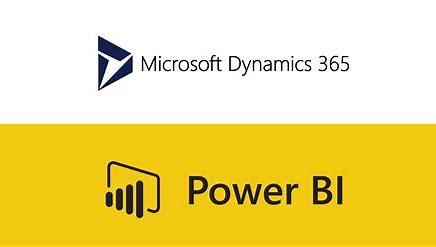One of the first and most important steps of implementing Dynamics 365 Finance is currency setup for accounting and reporting currency. Let's understand the use and setup options.
There are two types of currencies in Finance:
-
The main currency that a company uses is called the accounting currency. Is the one you record your books in, file government statements and do your reporting.
-
Often, a company must report recorded financial transactions based on a different currency, which is known as the reporting currency. The reporting currency is optional and can be used for consolidation or analysis purposes.
Currency types
Finance uses the concept of accounting currency and reporting currency. For each legal entity you can define in the path General ledger > Ledger setup > Ledger the following parameters:
-
Accounting currency - This is the monetary unit of measure that is used to record the converted monetary value of economic transactions in ledger accounts. It is also be referred to as the "company" or ledger currency. The setup is mandatory.

-
Reporting currency - The reporting currency is a secondary accounting currency, that measures the converted monetary value of transactions in a secondary currency, often for the purpose of consolidation or reporting to a parent organization. The setup is optional.
An example of this would be if you had a subsidiary company in UK, your primary company is in the United States. When running reports, you want to see the results of the business operations in Pounds (GBP). To accomplish this, you must convert your US dollars (USD) to GBP. The system uses the exchange rate defined on the Exchange rates page to convert the amounts for reporting purposes.

Multicurrency functionality may be used if your company does business in more than one currency. If your organization has multiple legal entities and transacts in multiple currencies, then maintaining currencies and their corresponding exchange rates is essential.
Specify exchange rate types that allow you to set up the currency exchange rates. When you have determined the accounting and reporting currencies, then you define currency exchange rates between two currencies or a currency pair.
The most important consideration is whether any transactions (actual or budget) have been posted in the legal entity for the ledger setup. You can't change the accounting or reporting currency, or add a reporting currency, if any transactions (actual or budget) have been posted in the legal entity.
Posting process
When a transaction is posted (invoice, payment, journal…) you need to select the Transaction currency, and the amounts is registered for the selected currency and accounting currency. Also, if the reporting currency is defined the amount is calculated in this currency, so all the amounts can be analyzed using the three currencies of the company.
The posting logic for all transactions that generate an accounting entry to general ledger is:
-
Transaction currency amount > Accounting currency amount
-
Transaction currency amount > Reporting currency amount
Because of this, exchange rates must exist between the currencies.
The following modules use the reporting currency as a second accounting currency:
General Ledger
If a reporting currency was defined on the ledger, the general ledger tracked reporting currency amounts on every accounting entry with the exchange rate type for the reporting currency used.
For foreign currency revaluation revalued amounts in the accounting and reporting currencies.
The inquiry Trial balance list page includes columns for both the accounting currency and the reporting currency.

Financial Reporting
Financial reporting includes features that support complex currency reporting requirements. Financial reporting can generate reports using any of the following currency amounts:
-
 Accounting currency amount
Accounting currency amount
-
Reporting currency amount, you can report directly on the reporting currency amounts that are posted to the ledger.
-
Transaction currency amount
-
Translated amount (currency translation is also known as conversion), translated to any currency that has been set up in the system.
Accounts payable and Accounts receivable
Transaction, accounting and reporting currency amounts are shown on transactions for both customers and vendors. Reporting currency amounts are also shown for the open balance of each transaction.

The aging process shows the aging buckets in either the accounting currency or the reporting currency.

Cash and bank management
Transaction, accounting and reporting currency amounts are automatically tracked for any new transactions that are posted.

The cash flow forecasting reports don’t include the reporting currency amounts, all the other reports for banks included.
Fixed assets
For fixed asset transactions, the transaction, accounting and reporting currency amounts are also automatically tracked for any transactions that are posted; the reporting currency amount is also calculated by using the depreciation method. The amounts are then used in the accounting entry in the general ledger.

Setup options
Setup one currency by LE
Define the accounting currency for each legal entity, example in DKK, EUR, USD…
-
All transactions will be posted in two currencies: transaction currency and accounting currency.
-
Financial reports in D365F: To obtain a report including legal entities with different currencies, use the Translated amount (currency translation is also known as conversion) in the financial report definition, to obtain the amounts in a global currency (example UDS); accounting currency amounts will be translated to the selected currency.
-
Reporting with Power BI: to obtain reports in a global currency all the amounts posted need to be calculated using an exchange rate or a fixed rate.
Setup two currencies by LE
Define the accounting currency for each legal entity, example in DKK, EUR, USD… and in all of them a reporting currency, example USD.
-
All transactions will be posted in three currencies: transaction currency, accounting currency and reporting currency.
-
Financial reports in D365F: To obtain a report including legal entities with different currencies, use the Reporting amount, using the amounts posted in ledger. The benefit is that it will not require translations to obtain the amounts and you can analyze the reporting amounts in each legal entity and transaction without generating a report or running a consolidation process.
-
Reporting with Power BI: to obtain reports in a global currency not calculations are needed, the amounts just need to be summarized.
-
There are no disadvantages.
If you are interested in learning more, please do not hesitate to contact us.


